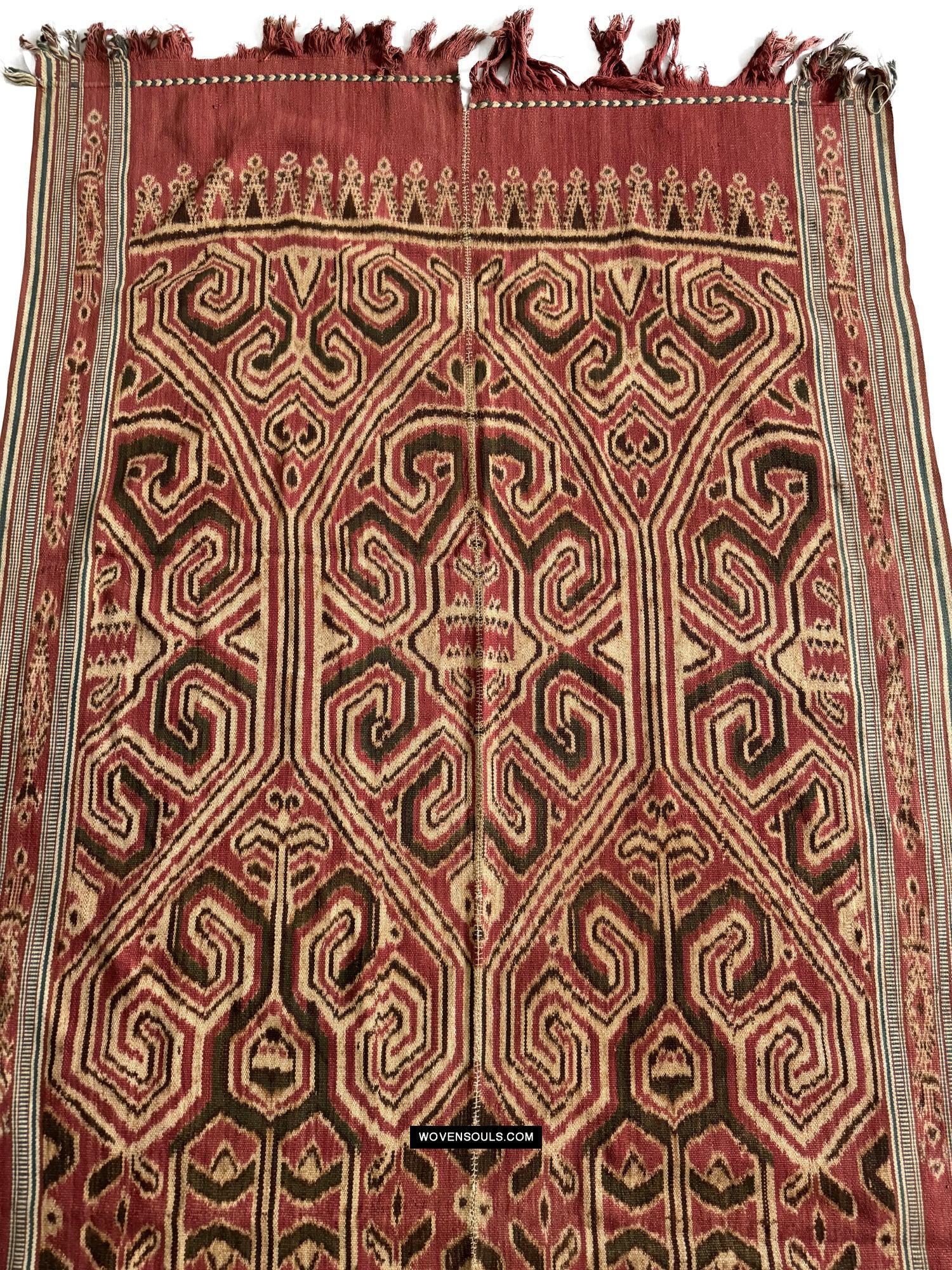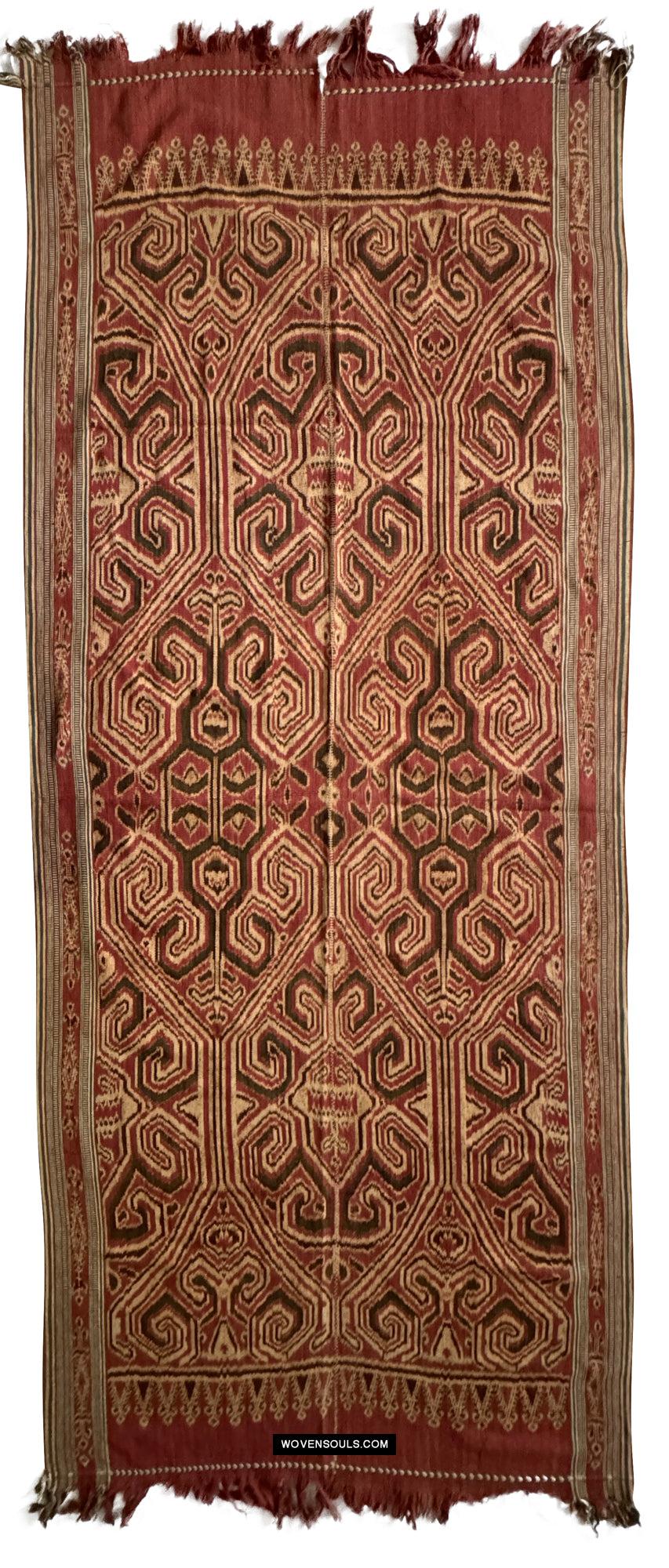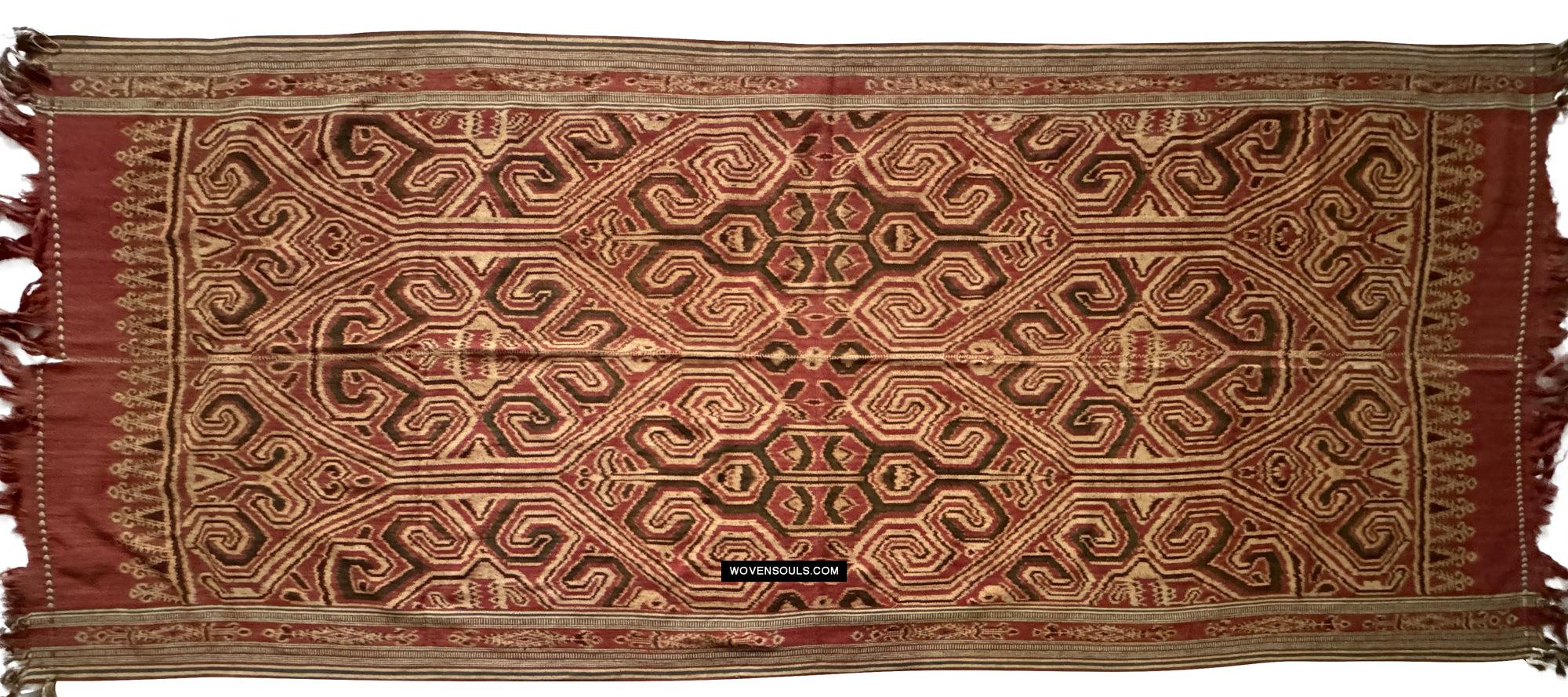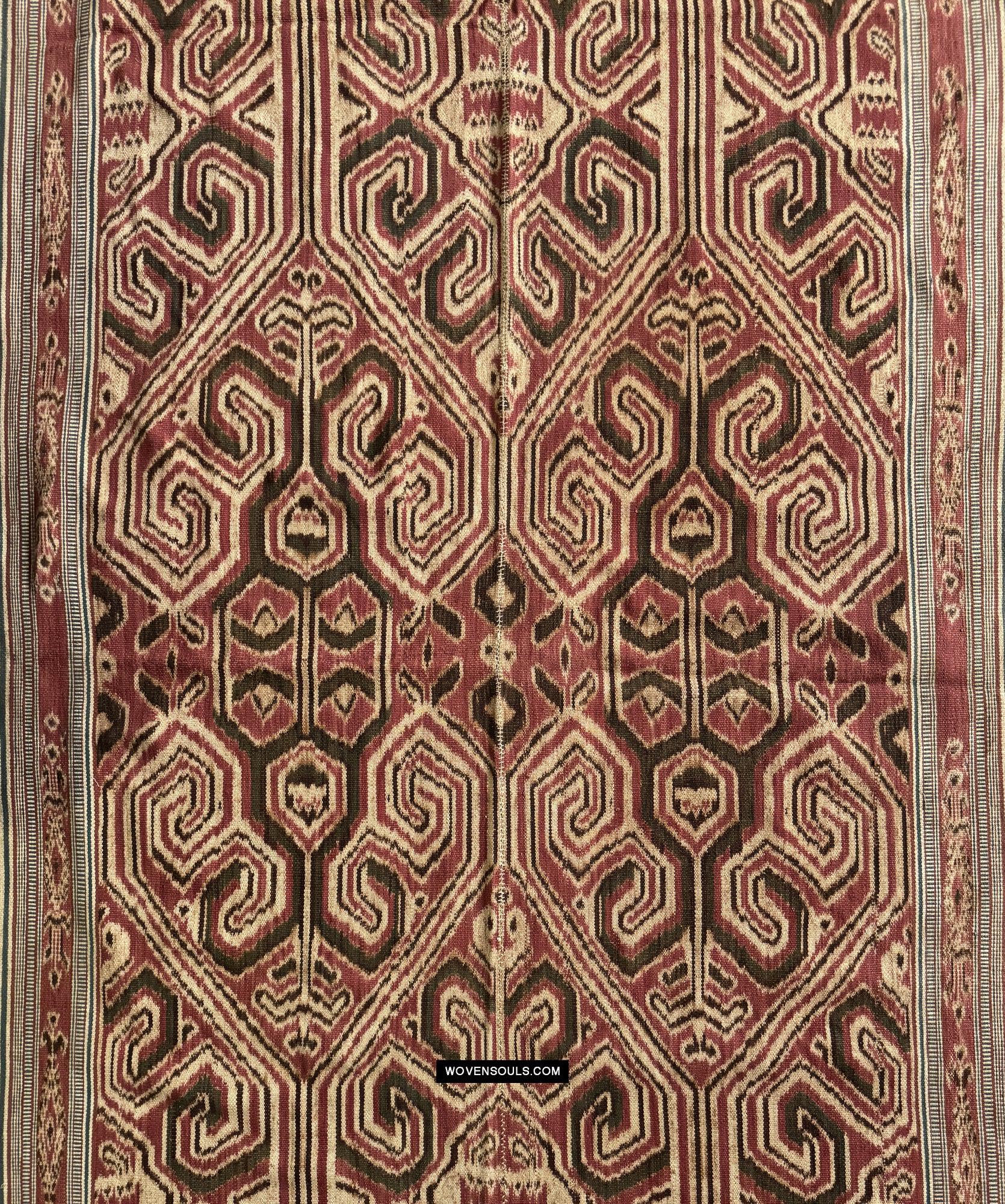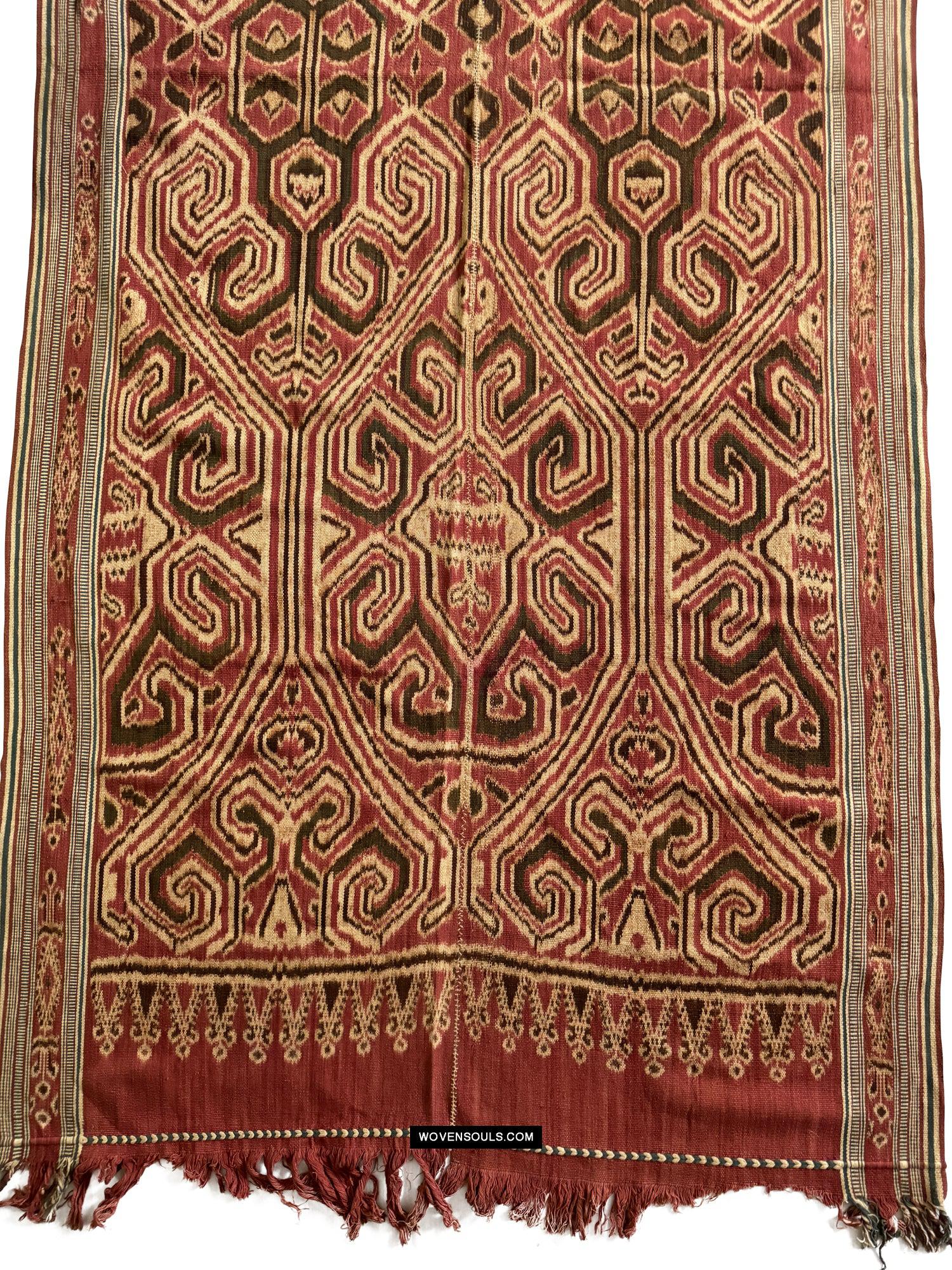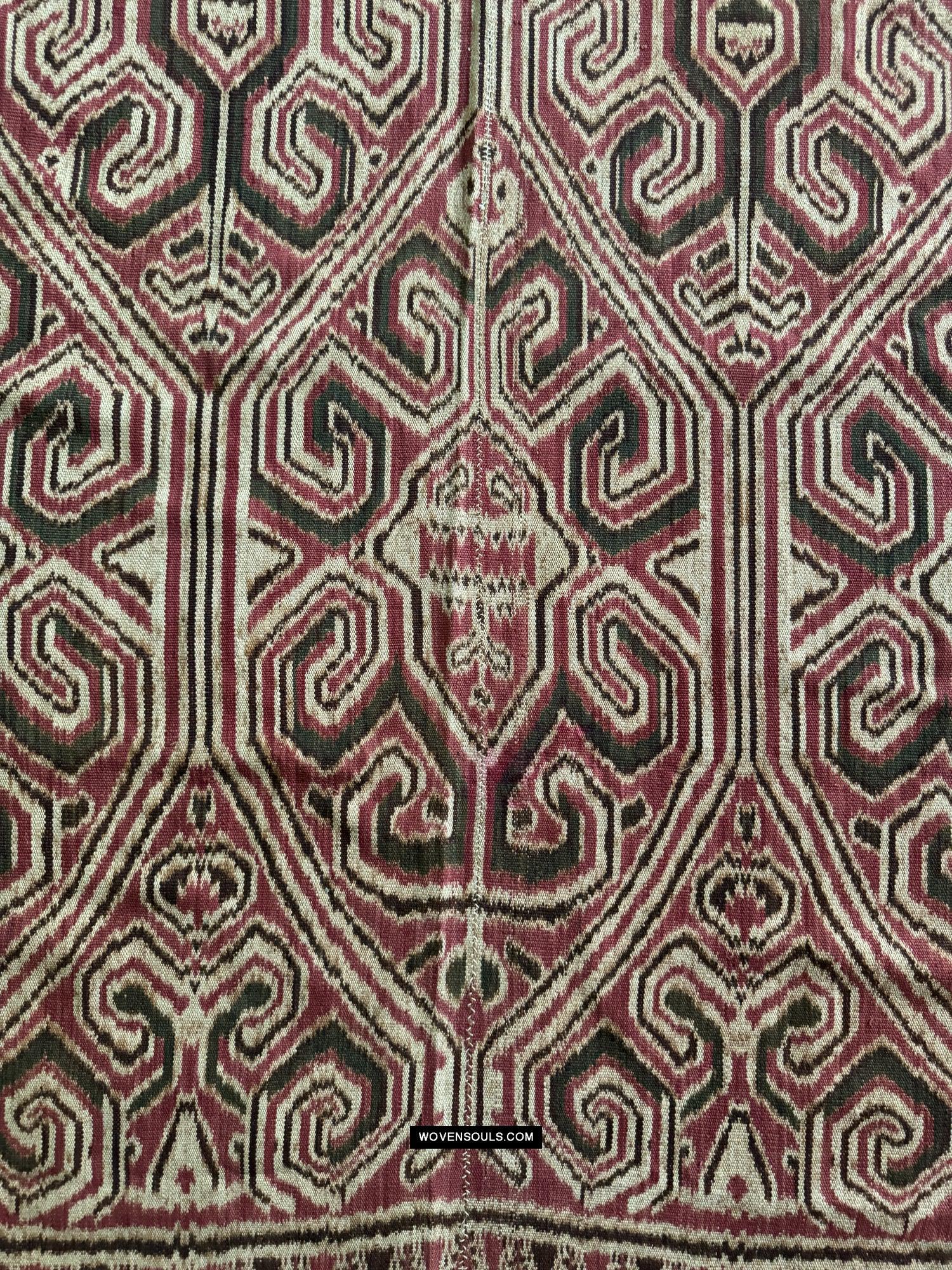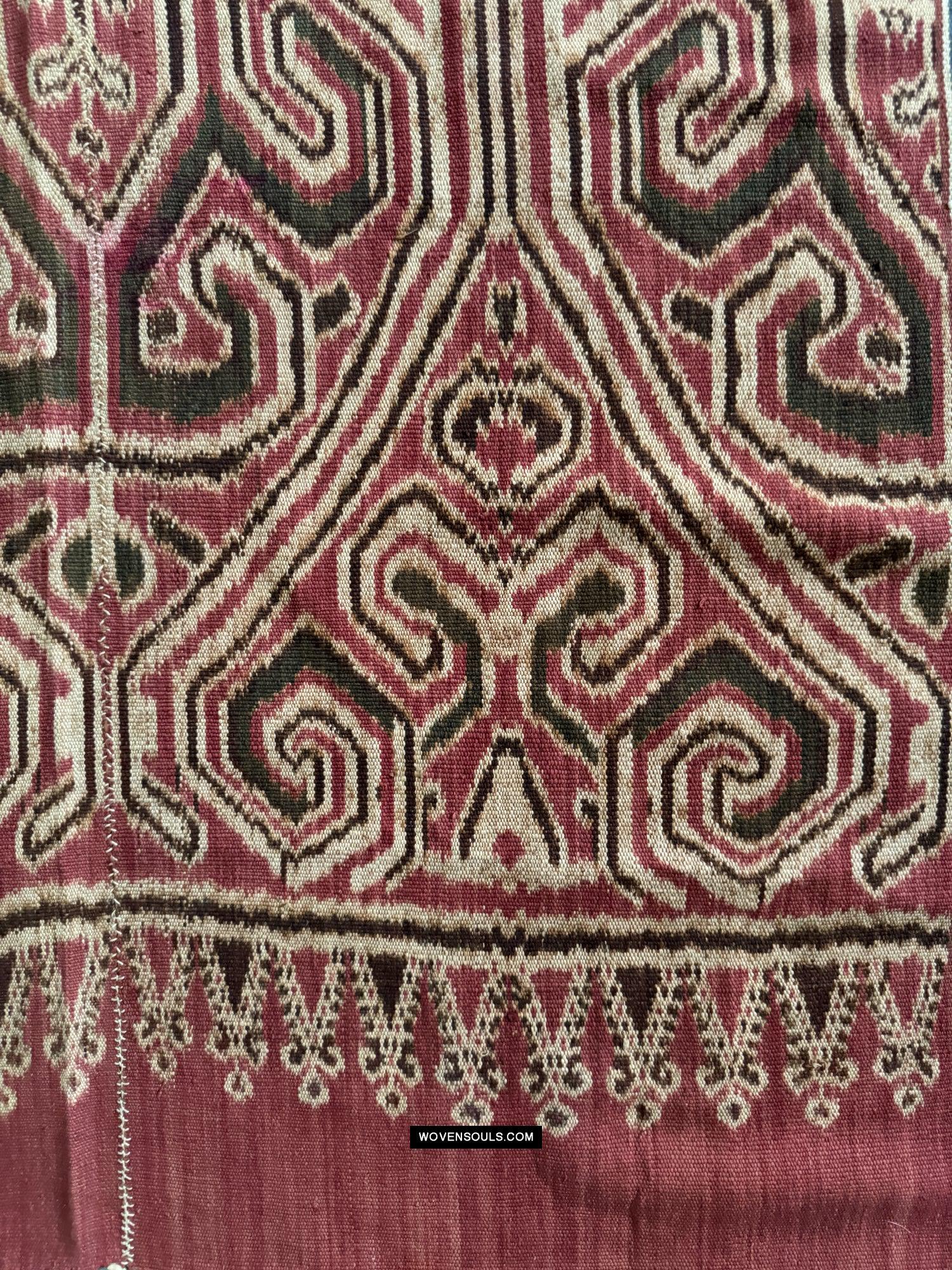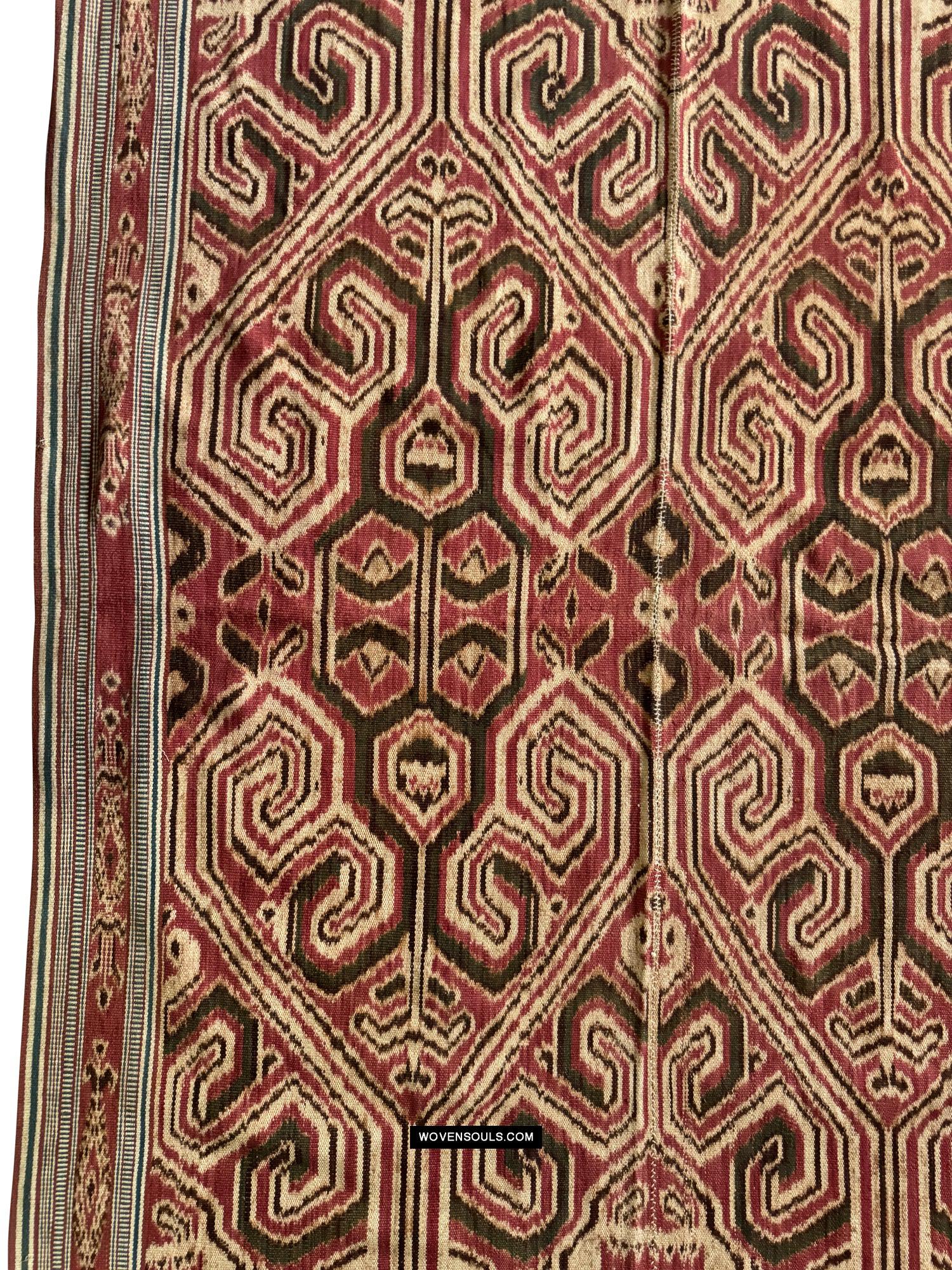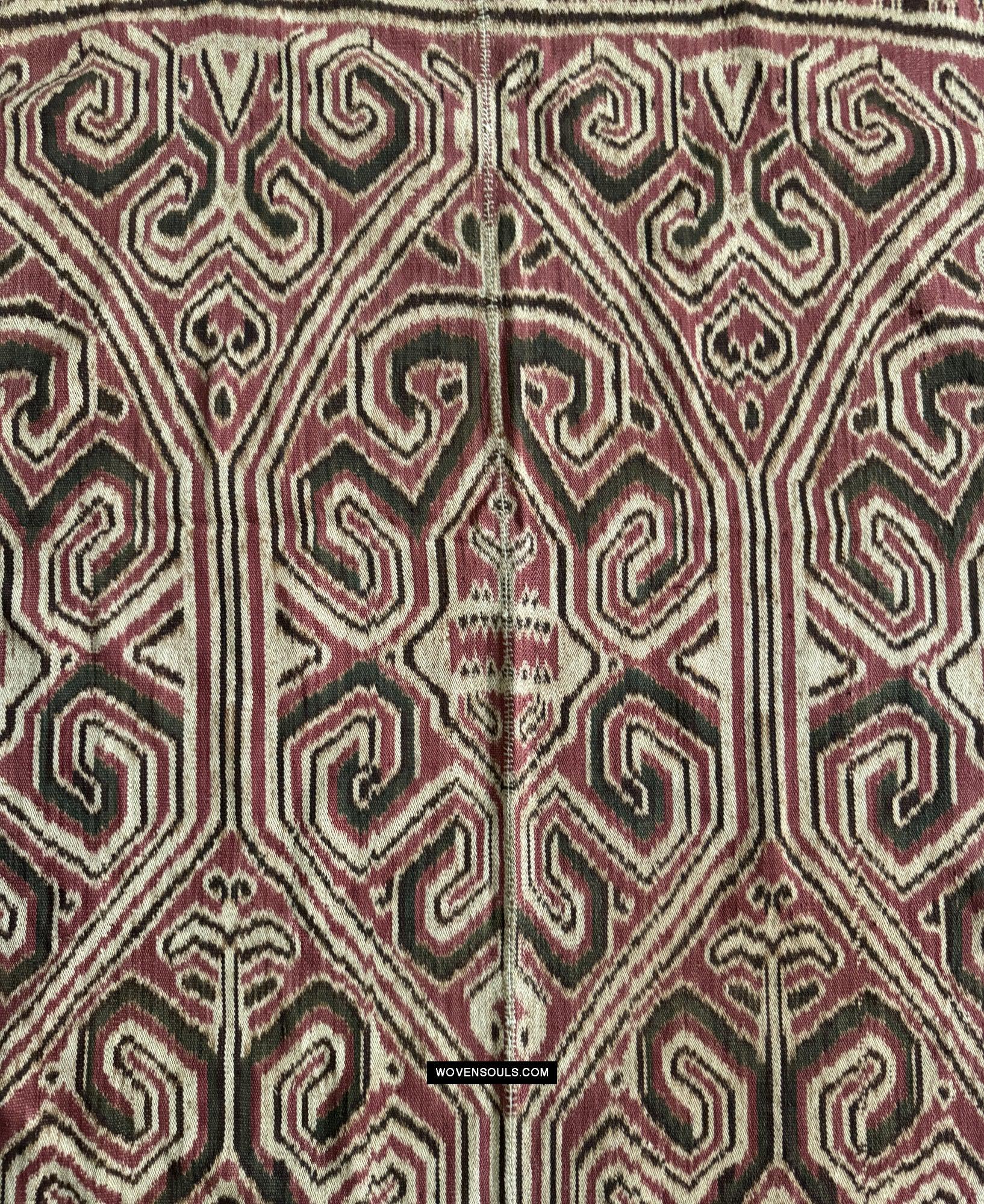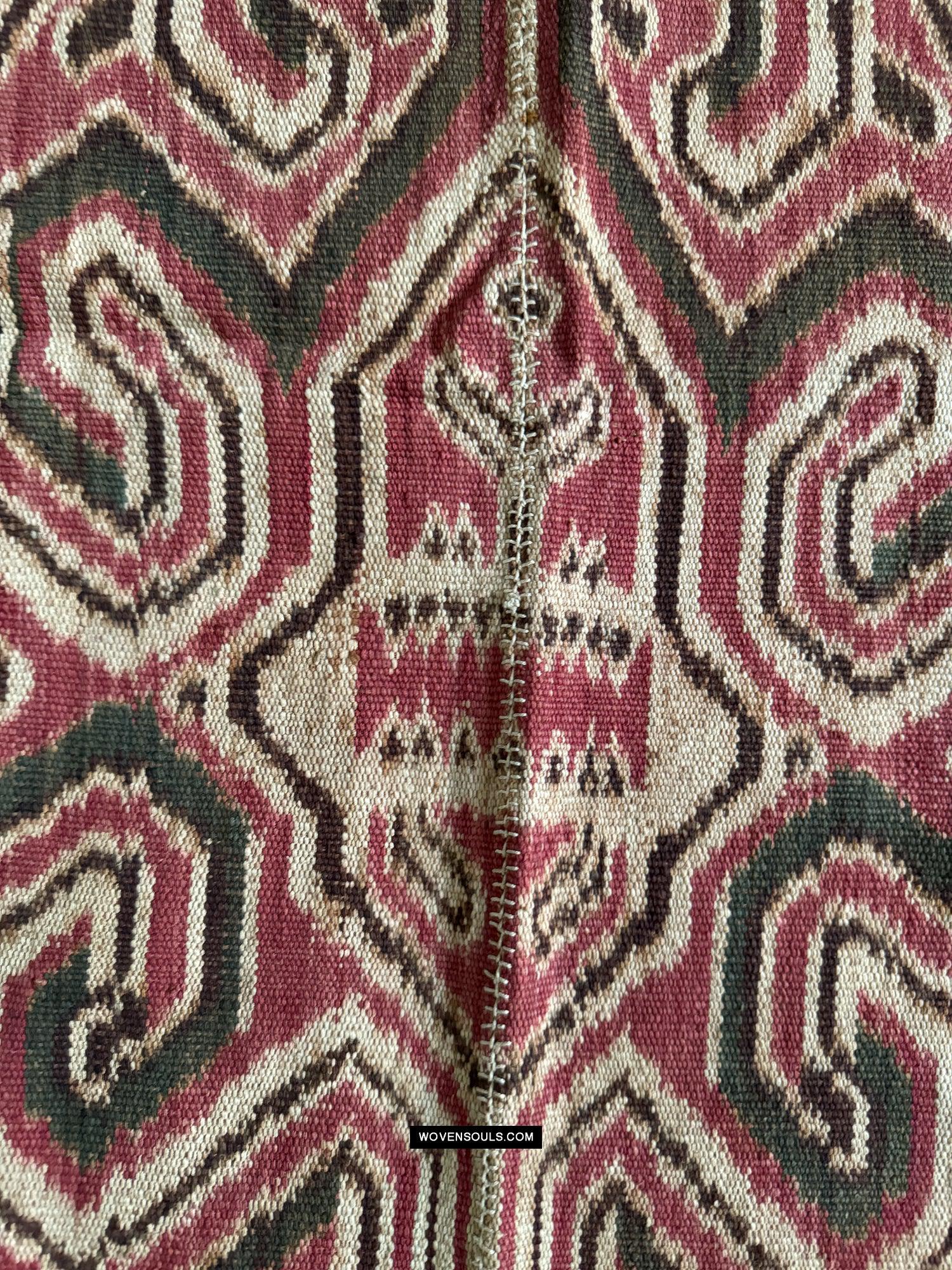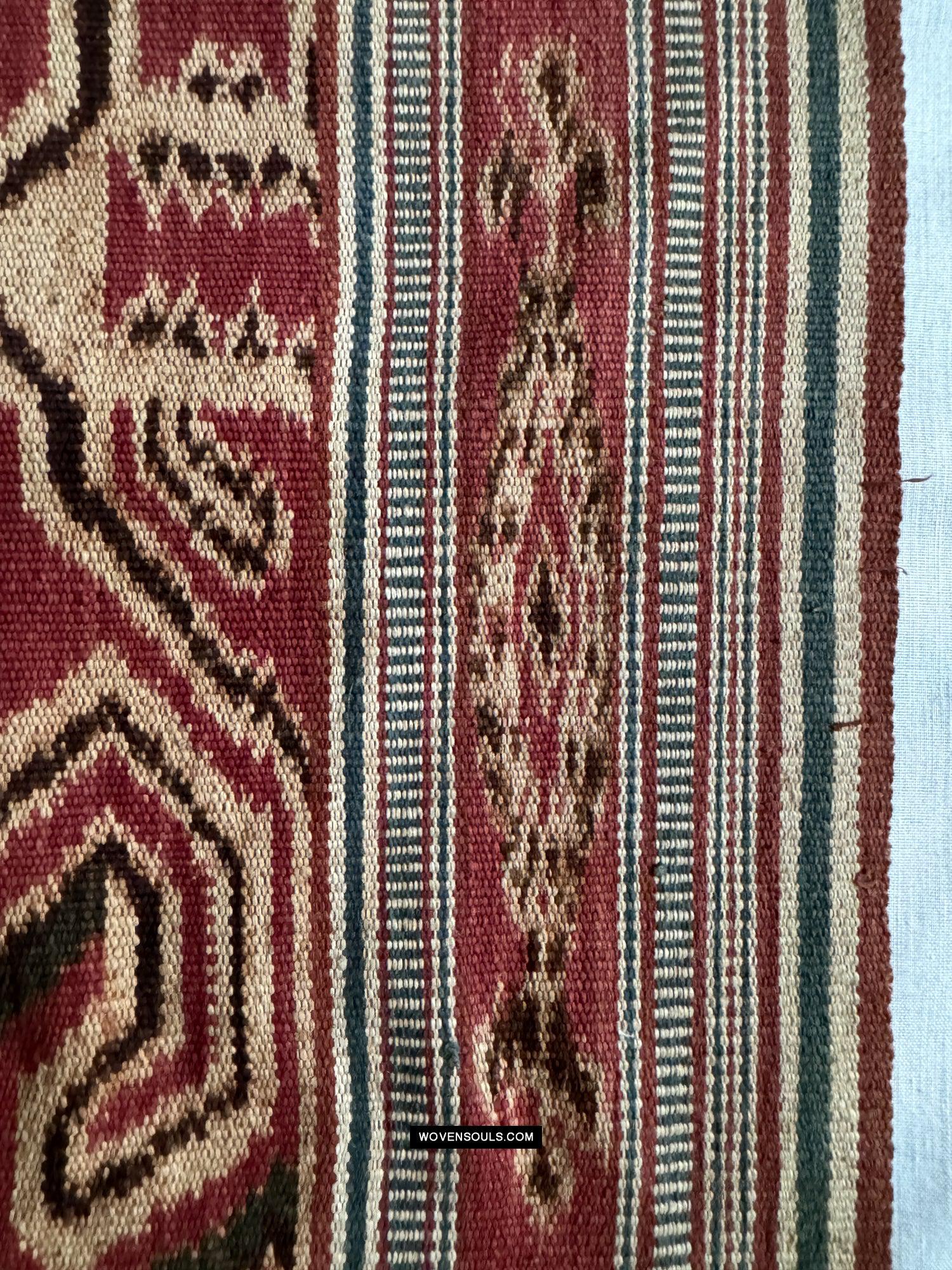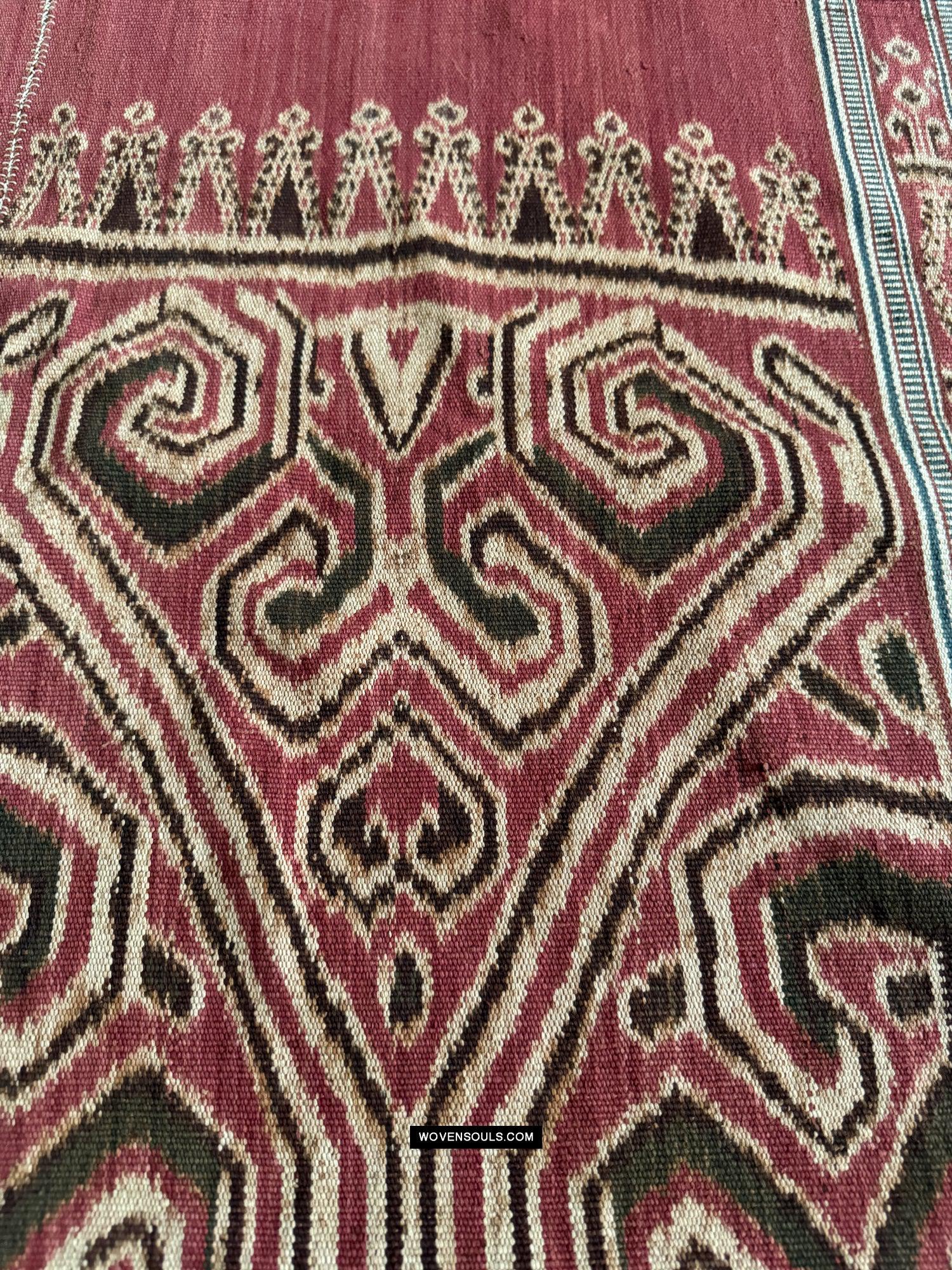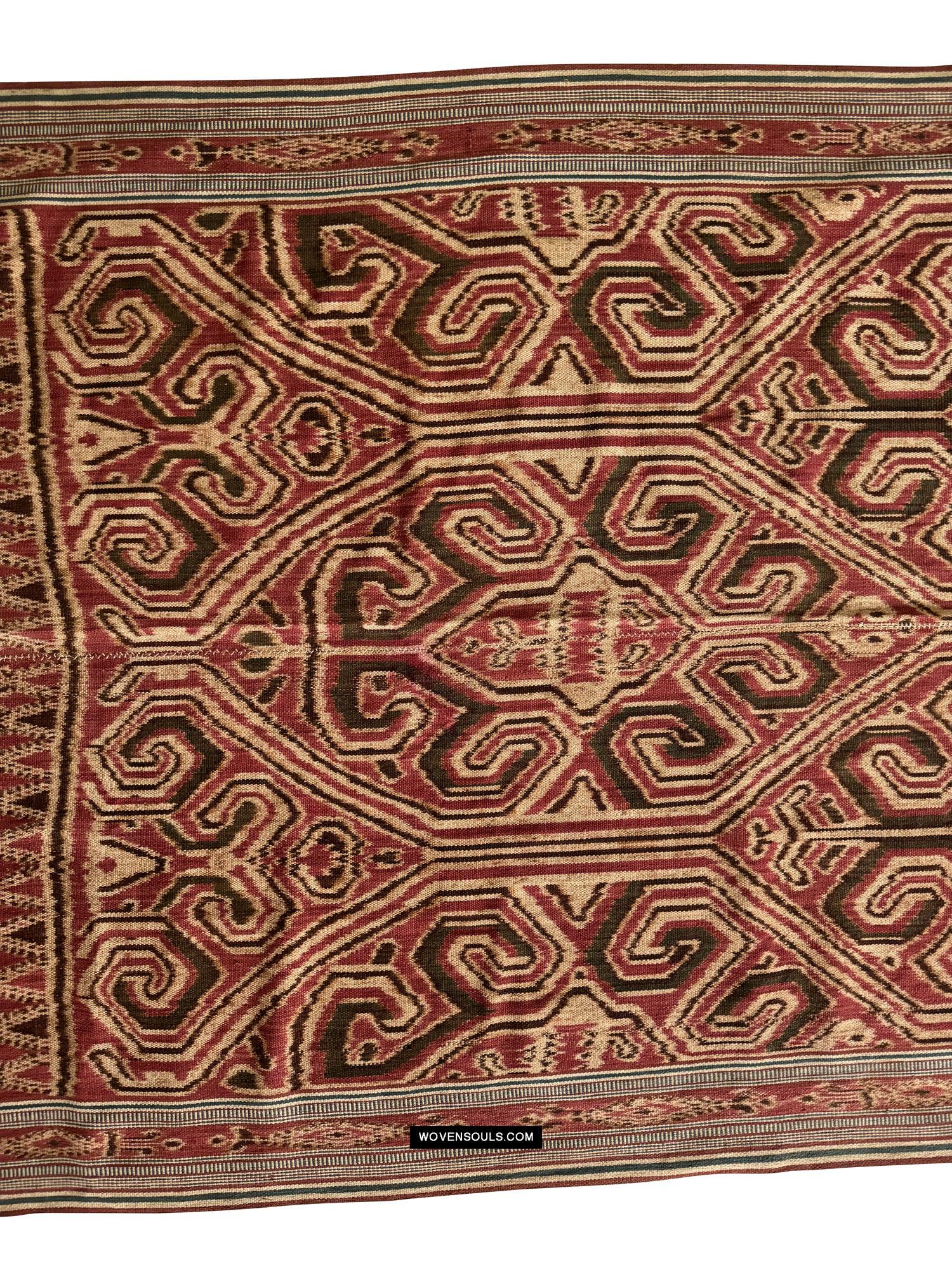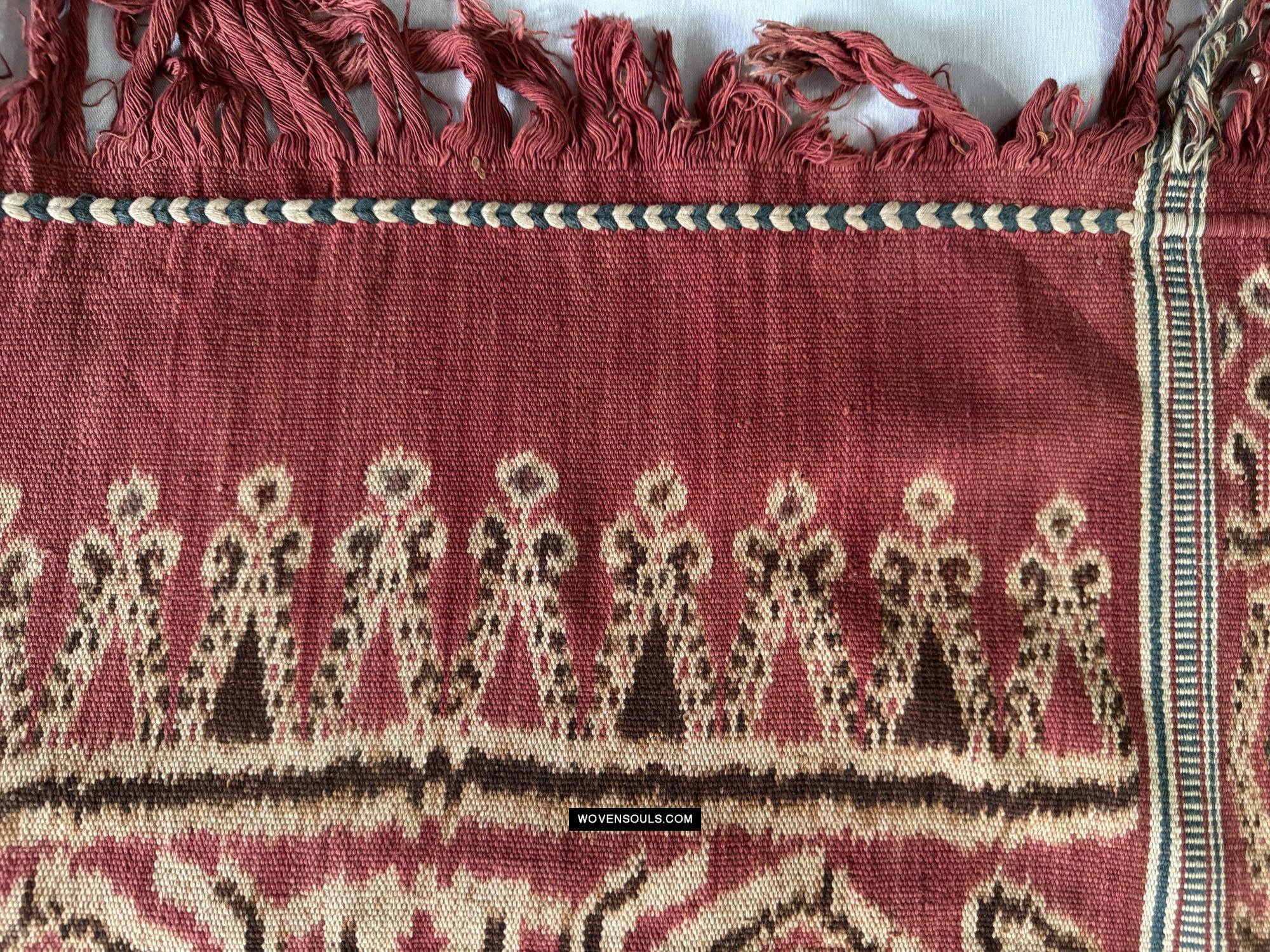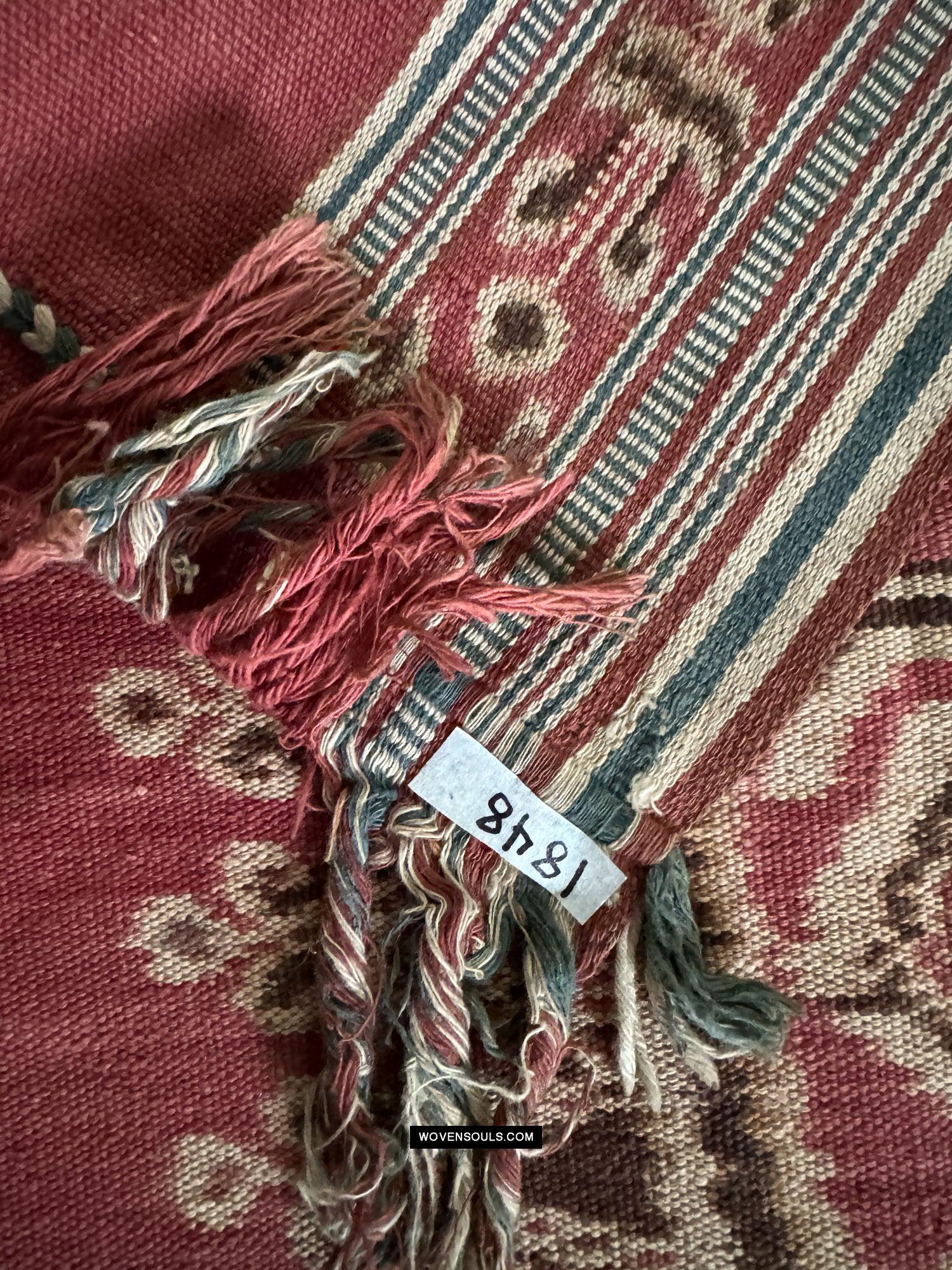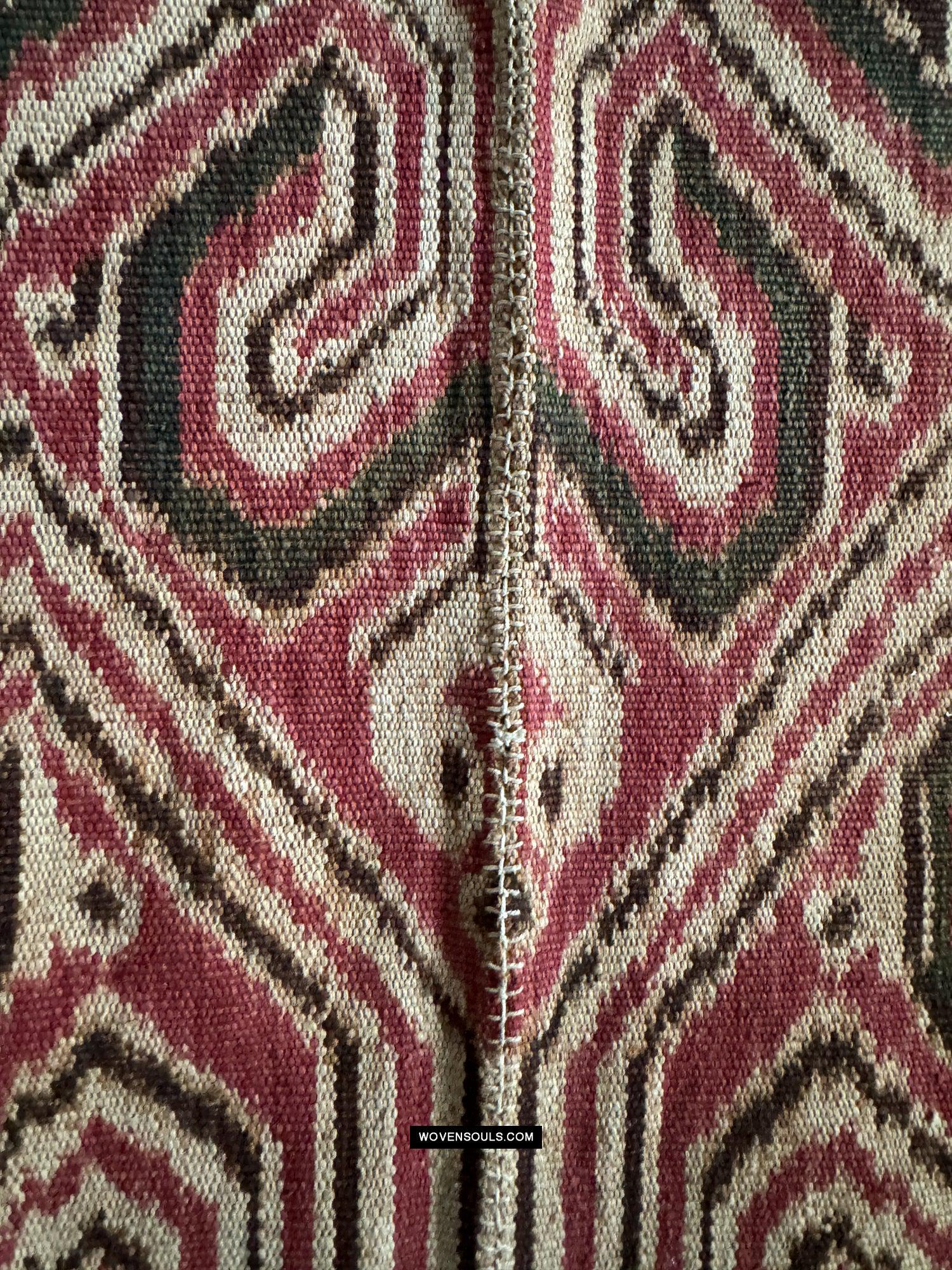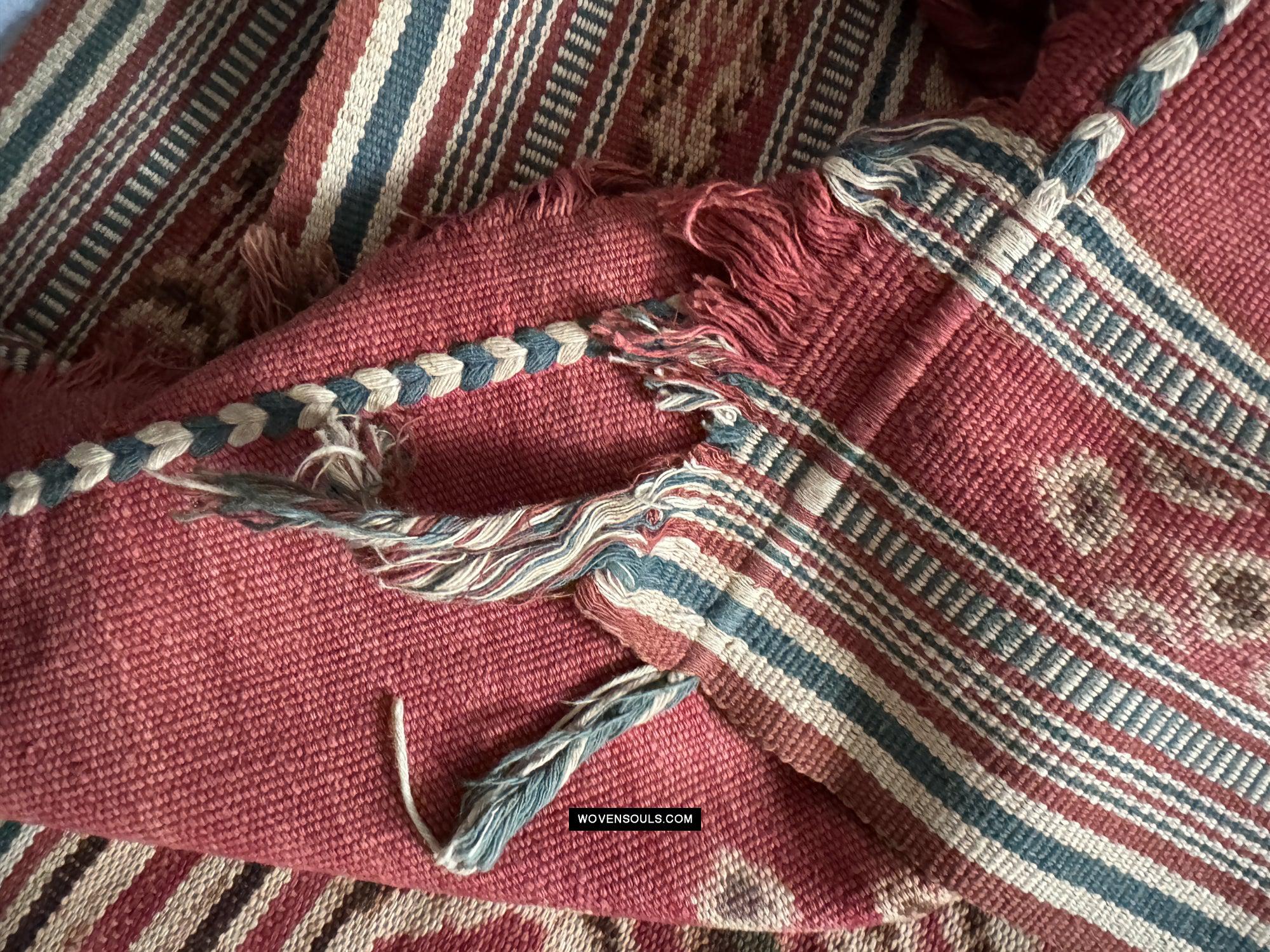1848 Antique Iban Ceremonial Ikat - Sickle Moon
Antique Iban Ceremonial Ikat Pua Kumbu
Among the Iban, textiles are treasured as they are more than just objects made of fibre.
In some cultures, such as the Iban, textiles have played a major, if not central role, in all the ceremonies surrounding the important events in life. Power structures among women are based on dyeing and weaving skills. Perhaps the most important materials owned by families were textiles.
Ikat textiles are among the hardest to make, as the tie-dye is done on the unwoven threads before they are woven into cloth. So with a design in the weaver's imagination, the thread is dyed in sections as per the pattern that is required to be created. This takes immense precision and calculation. So when we note that these textiles were made decades ago in the rainforests of Borneo - Kalimantan, Sabah & Sarawak, there is a sense of awe for the creators.
Further, textiles themselves were believed to have the power to connect to the spirit world. The motifs, the dyes and the complexity of the weaving - all factors that were a direct result of the weaver's skill and experience - contributed to the power held by a textile.
Only textiles with certain features could be used during the most important community ceremonies and the weavers of these therefore enjoyed an elevated status of prestige.
So to study an Iban textile, requires us to focus on patterns, motifs, complexity and lastly and equally importantly - the dyes. The process of dyeing enjoys a far greater role in the value chain of production of Iban textiles than it does in any other group of textiles.
Size: 236 x 102
MY NOTES ON THIS TEXTILE:
This is the sickle moon pattern Buah bulan menyimbang - that can also be seen in various books on Iban textiles. One example is Iban Ritual Textiles by Traude Gavin - fig 184.
This pattern requires planning of the dyed threads along the diagonal axis. This requires a visualisation of how the adjacent thread will have a specific color at a point just a little higher than the previous one - and so on. So executing this pattern requires great skill.
In this pua we see several parallel lines created diagonally - managing equal distances along the length of the lines adds to the complexity of the planning at the time of tieing the threads prior to dyeing.
Note the little ornaments woven in ikat in the side border or Ara
Note the horizontal bands at the top and the bottom
Has a fabulous personality and will make a superb wall artwork
CLICK TO SEE THE COMPLETE COLLECTION OF IKAT PUA KUMBU
This item has spent a lifetime being used for the purpose of its creation with the original artist/user. Signs of this life lived heartily may be present on the piece in the form of stains, thread loss, loose threads, holes, tears, color run and other imperfections. Therefore the condition must be assumed to be “not” perfect. More photos of such imperfections will be provided on request.
***

